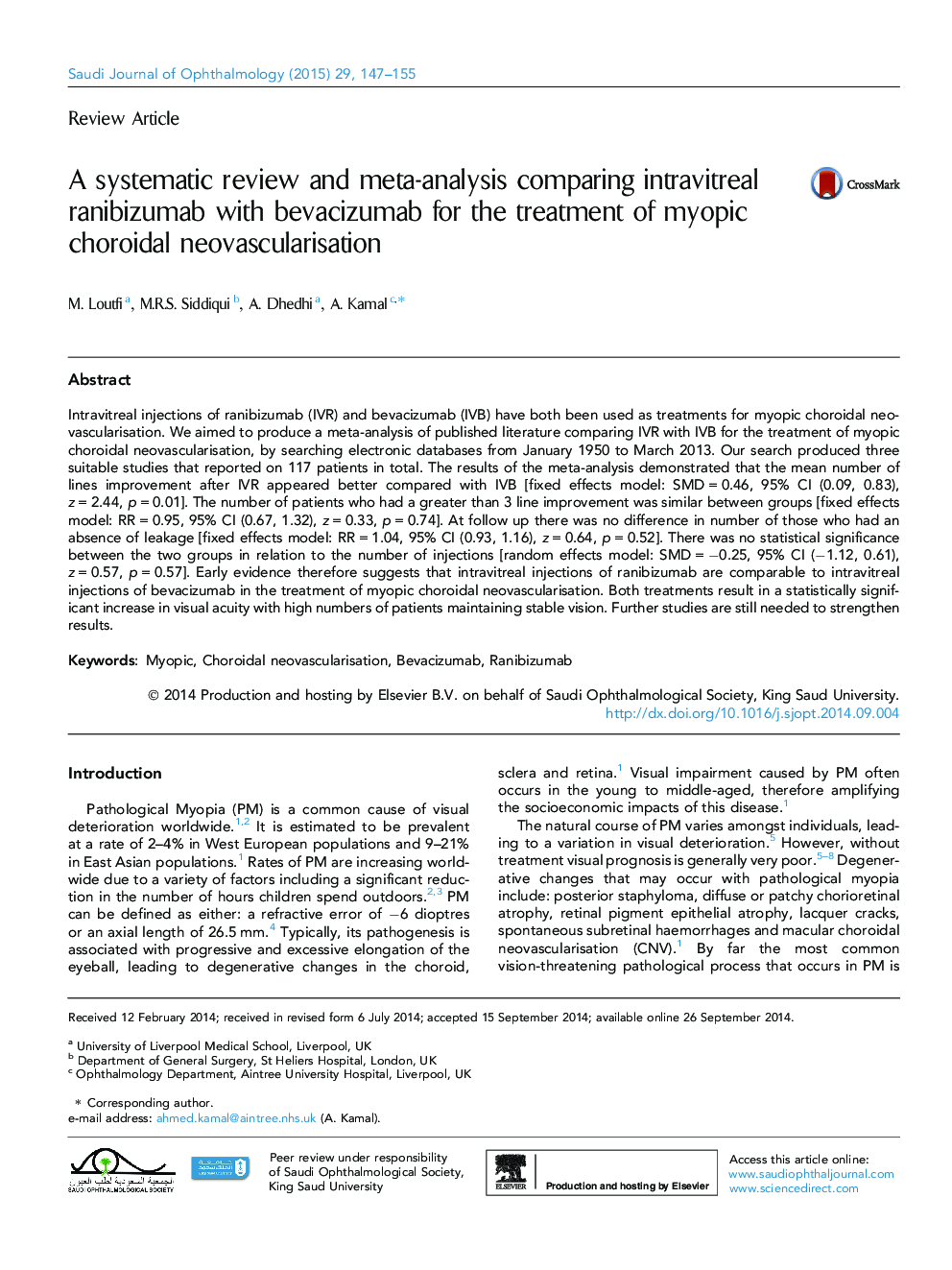| Article ID | Journal | Published Year | Pages | File Type |
|---|---|---|---|---|
| 2703856 | Saudi Journal of Ophthalmology | 2015 | 9 Pages |
Intravitreal injections of ranibizumab (IVR) and bevacizumab (IVB) have both been used as treatments for myopic choroidal neovascularisation. We aimed to produce a meta-analysis of published literature comparing IVR with IVB for the treatment of myopic choroidal neovascularisation, by searching electronic databases from January 1950 to March 2013. Our search produced three suitable studies that reported on 117 patients in total. The results of the meta-analysis demonstrated that the mean number of lines improvement after IVR appeared better compared with IVB [fixed effects model: SMD = 0.46, 95% CI (0.09, 0.83), z = 2.44, p = 0.01]. The number of patients who had a greater than 3 line improvement was similar between groups [fixed effects model: RR = 0.95, 95% CI (0.67, 1.32), z = 0.33, p = 0.74]. At follow up there was no difference in number of those who had an absence of leakage [fixed effects model: RR = 1.04, 95% CI (0.93, 1.16), z = 0.64, p = 0.52]. There was no statistical significance between the two groups in relation to the number of injections [random effects model: SMD = −0.25, 95% CI (−1.12, 0.61), z = 0.57, p = 0.57]. Early evidence therefore suggests that intravitreal injections of ranibizumab are comparable to intravitreal injections of bevacizumab in the treatment of myopic choroidal neovascularisation. Both treatments result in a statistically significant increase in visual acuity with high numbers of patients maintaining stable vision. Further studies are still needed to strengthen results.
